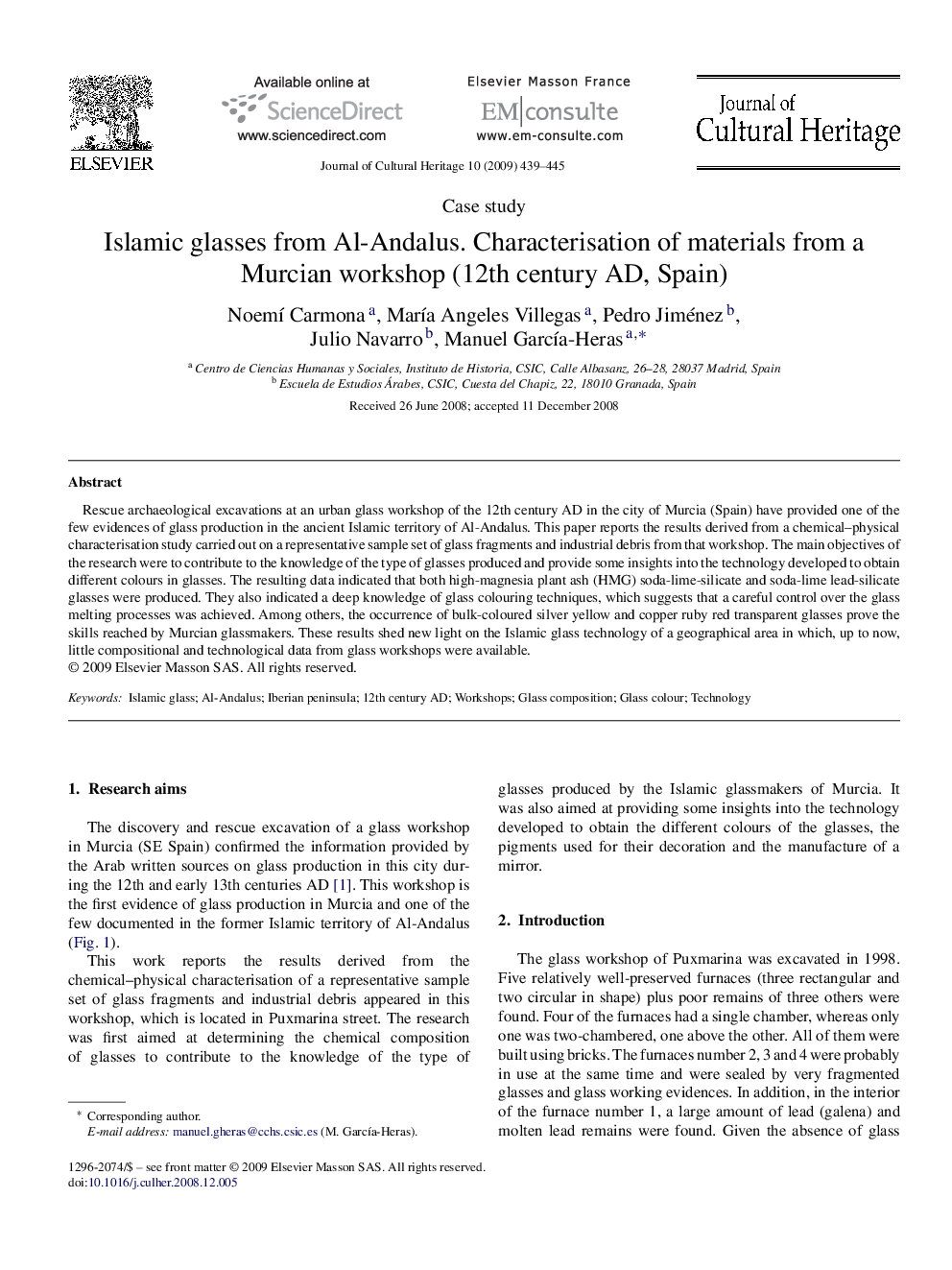| Article ID | Journal | Published Year | Pages | File Type |
|---|---|---|---|---|
| 1038591 | Journal of Cultural Heritage | 2009 | 7 Pages |
Rescue archaeological excavations at an urban glass workshop of the 12th century AD in the city of Murcia (Spain) have provided one of the few evidences of glass production in the ancient Islamic territory of Al-Andalus. This paper reports the results derived from a chemical–physical characterisation study carried out on a representative sample set of glass fragments and industrial debris from that workshop. The main objectives of the research were to contribute to the knowledge of the type of glasses produced and provide some insights into the technology developed to obtain different colours in glasses. The resulting data indicated that both high-magnesia plant ash (HMG) soda-lime-silicate and soda-lime lead-silicate glasses were produced. They also indicated a deep knowledge of glass colouring techniques, which suggests that a careful control over the glass melting processes was achieved. Among others, the occurrence of bulk-coloured silver yellow and copper ruby red transparent glasses prove the skills reached by Murcian glassmakers. These results shed new light on the Islamic glass technology of a geographical area in which, up to now, little compositional and technological data from glass workshops were available.
